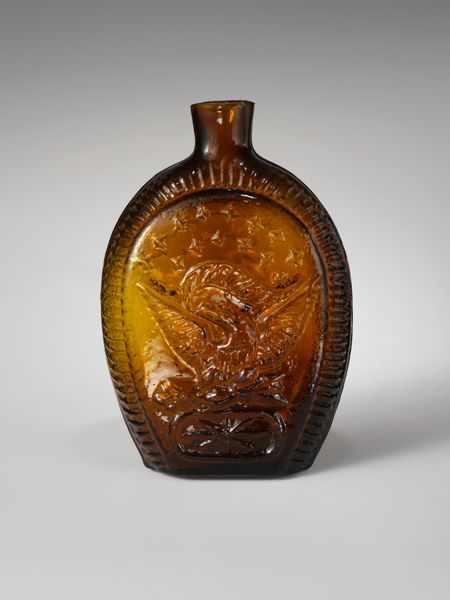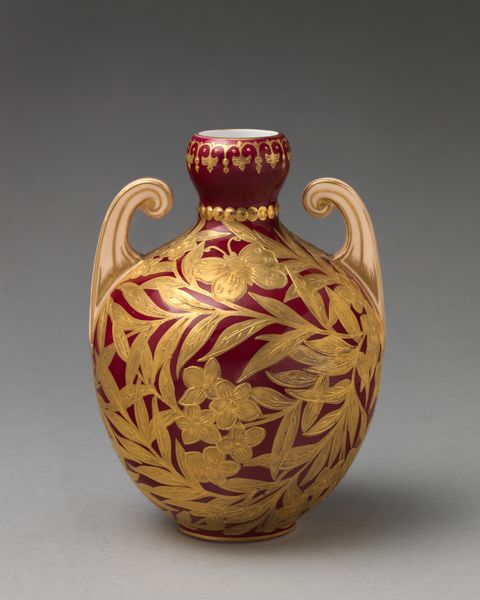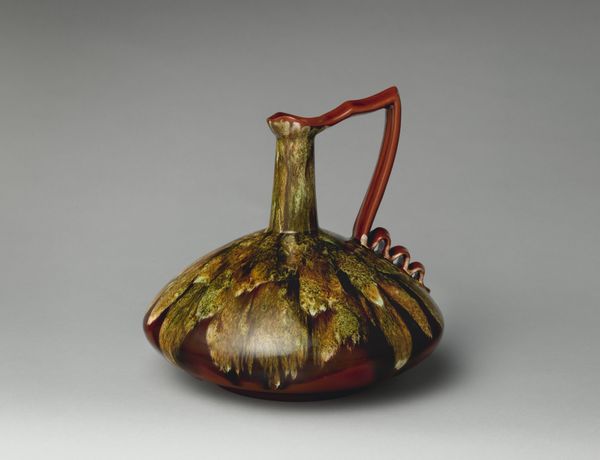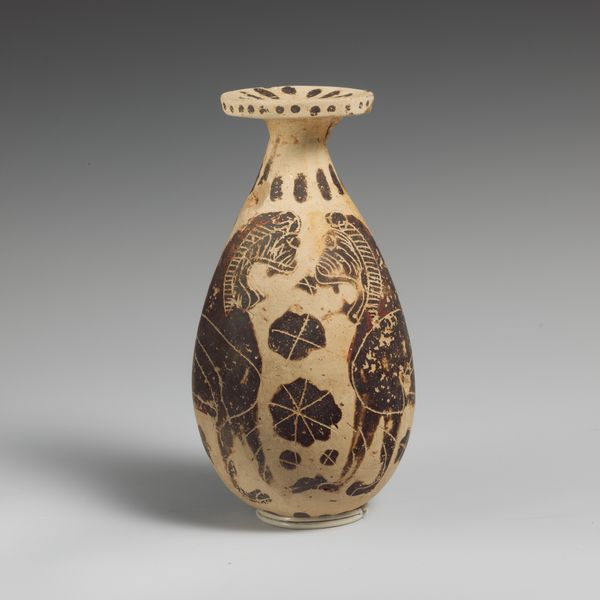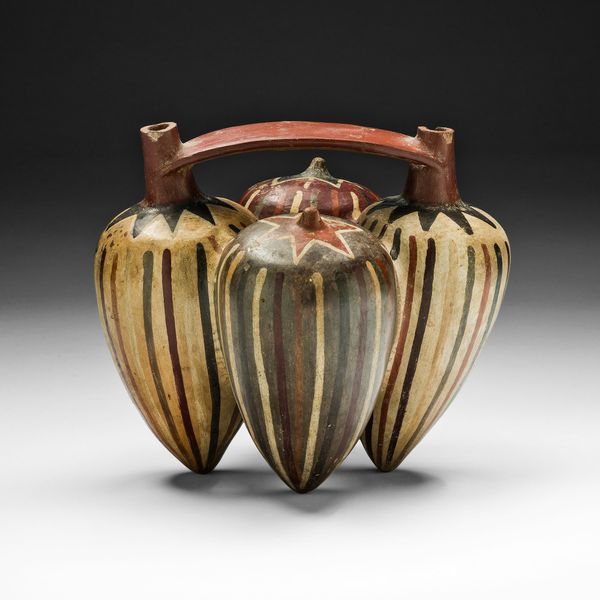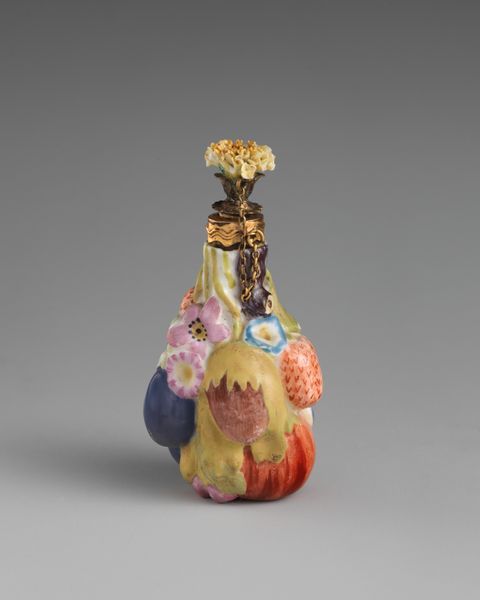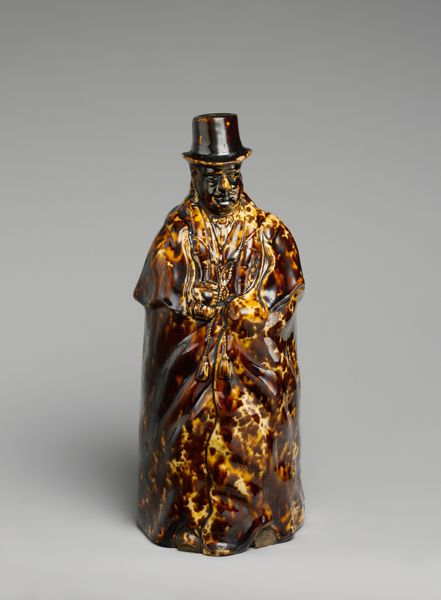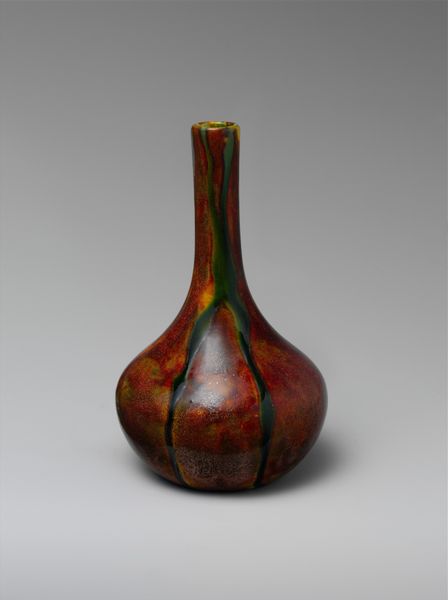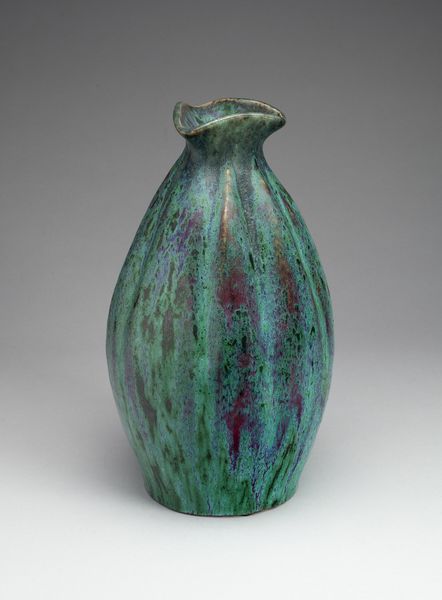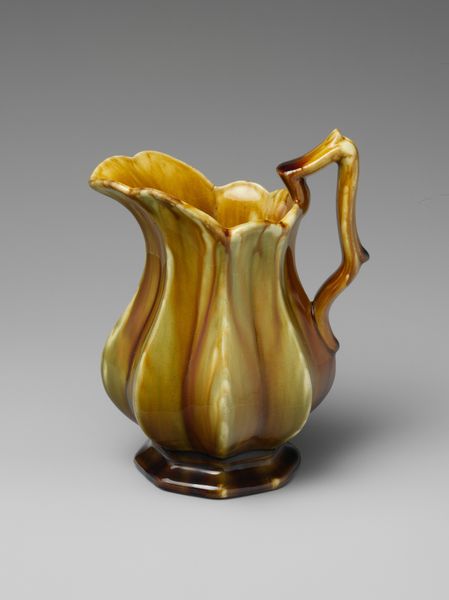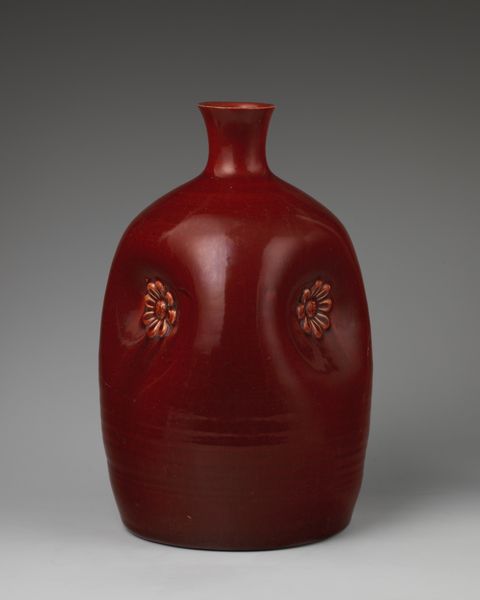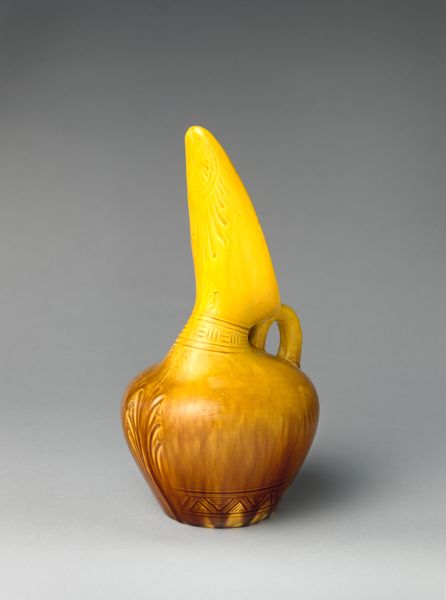
ceramic, porcelain, sculpture
#
ceramic
#
porcelain
#
sculpture
#
decorative-art
#
rococo
Dimensions: Overall: 2 3/4 × 1 1/2 in. (7 × 3.8 cm)
Copyright: Public Domain
Editor: Here we have "Tulip," crafted from porcelain by the Chelsea Porcelain Manufactory between 1755 and 1765. The form is wonderfully peculiar. The way they have mimicked the flower is just precious, and there’s this butterfly perched at the top – how lovely! How do you read this, in terms of imagery and what the piece as a whole is trying to communicate? Curator: The tulip, bursting with potential, coupled with the butterfly—a potent symbol of transformation—speaks volumes. Recall the Dutch Golden Age, when tulips commanded exorbitant prices; they symbolized wealth, luxury, and status. Do you think the artist would have wanted to subtly reference a wealthy Dutch trading class of the previous century? Editor: I see your point. It's more than just a pretty flower; there are layers here relating to trade. I suppose the butterfly would also represent luxury? Curator: Yes, definitely. Moreover, beyond wealth, butterflies often speak to a fleeting beauty, the transience of life. Perhaps a vanitas message nestled within its decorative exterior? Consider porcelain itself – fragile, beautiful, and easily broken. A reminder of our own mortality, wouldn't you agree? Editor: That’s a really fascinating take. So, the piece could also be speaking to a fragility? It gives it more depth than I initially considered. Curator: Indeed! Its creators would have surely wished that this bloom, frozen in porcelain, could outlast even a real tulip. By referencing ideas around change and the short beauty we're gifted in life, it encourages us to ask ourselves what we choose to leave behind, or keep close to us during the passage of time. Editor: Well, I am happy to walk away thinking of that sentiment. Thanks so much for illuminating that! Curator: My pleasure. It is wonderful how art can take us to deeper levels.
Comments
No comments
Be the first to comment and join the conversation on the ultimate creative platform.
